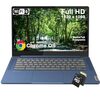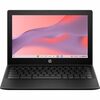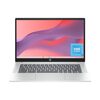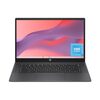How to Create a Bootable USB Drive on Linux?
Unsurprisingly, there's more than one way to do it, but I recommend using the command-line option described below. In my experience this is the fastest and most reliable way to end up with a working bootable Linux distribution.
First, download and verify your distribution of choice. For demo purposes I'll use the 64-bit PC (AMD64) version of Ubuntu MATE 15.04, available from their downloads page. In all commands below the prompt is indicated by ~$, so do not type these 2 characters.
~$ wget http://cdimage.ubuntu.com/ubuntu-mate/releases/15.04/release/ubuntu-mate-15.04-desktop-amd64.iso
Walk around a bit or grab a coffee, you have some time now. Next, verify the downloaded package by comparing its MD5 hash with the one specified for the corresponding image.
~$ md5sum ubuntu-mate-15.04-desktop-amd64.iso
bf5dc0c6eeff41b486d5f89150f913a2 ubuntu-mate-15.04-desktop-amd64.iso
Now that you verified the downloaded package insert your USB drive and run the following command to find out the location of your USB device.
~$ df -aTh
...
tmpfs tmpfs 799M 28K 799M 1% /run/user/120
tmpfs tmpfs 799M 52K 799M 1% /run/user/1000
/dev/sdd1 vfat 3,8G 4,0K 3,8G 1% /media/linuxnetbook/64C1-022A
In this case the location is /dev/sdd1. It is IMPORTANT that you determine this yourself and not just copy a name you found on a Web page. Alternatively, you can use the mount command or view the contents of /proc/mounts, but I find the df command above to produce the most readable output.
The last step is to actually create the bootable USB drive using the dd command. To be on the safe side, you can unplug all USB devices except your target drive, to make sure you do not accidentally delete data from other devices. Otherwise, messing up the device location can cause a lot of grief.
~$ dd bs=4M if=/home/linuxnetbook/ubuntu-mate-15.04-desktop-amd64.iso of=/dev/sdd1 && sync
Again this may take a bit. The output should look similar to the one below, obviously the numbers may vary:
274+1 records in
274+1 records out
1149714432 bytes (1,1 GB) copied, 39,7695 s, 28,9 MB/s
That's it! Now you should be able to boot the Linux operating system from your USB drive. If you're not on a Linux system yet, check out this guide in the Arch Wiki, that covers other operating systems as well.
To be informed of new posts, subscribe to the RSS feed or follow Linux Netbook on Facebook.
Affiliate Disclosure: External links on this website may contain affiliate IDs, which means that I earn a commission if visitors make a purchase via such a link. For details, see the disclosure page.



